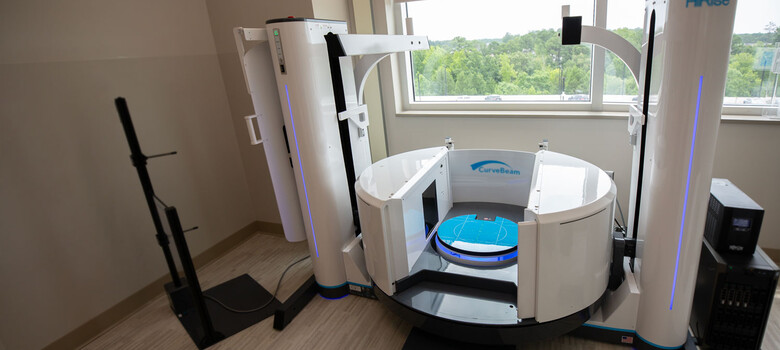Could Peripheral Nerve Stimulation Eliminate Your Chronic Pain?

Peripheral nerve stimulation is becoming a popular treatment option for everything from stubborn back pain to rare neuropathies. Compared with opioid pain killers, peripheral nerve stimulation technology works better, lasts longer, and carries no risk of dependence.
There is a role for opioids and nerve medications in pain management, but they come with side effects, can hamper quality of life, and carry risks like abuse and addiction potential. Here, Duke Health’s Neill Li, MD, a peripheral nerve surgeon who specializes in pain management, explains how peripheral nerve stimulation works and whether you could benefit from it.
Identifying the Source of Your Pain
The first step in treating pain of any kind is finding its true source, which could be a damaged peripheral nerve. According to Dr. Li, this requires a thorough conversation with your doctor, testing, and trying conservative treatments like medications first. If those don’t relieve your pain, peripheral nerve stimulation might be an option for you.
What Is Peripheral Nerve Stimulation?
Peripheral nerve stimulation uses electrical energy to block specific nerves from sending pain signals to the brain. Delivering tiny electrical impulses to the nerve changes how it behaves and how often it fires.
Some data show that peripheral nerve stimulation actually changes signaling in the brain and how it perceives and responds to chronic pain. Because of the high frequency of the stimulation, you can’t feel it.
What Is the Placement Procedure Like?
There are two main options for placing a peripheral nerve stimulator. Some people may get more benefit from their stimulation device if they simultaneously undergo decompression surgery, meaning a surgeon relieves pressure on the nerve causing your pain. Alternatively, you may qualify for a less-invasive surgical procedure using only local anesthesia.
For both approaches, doctors use X-ray and ultrasound guidance to precisely place a thin electrode or lead next to the target nerve. The end of the lead, which can be as thin a spaghetti noodle or a sewing thread, is either hidden under your skin or exits through your skin and is secured.
A removable, wearable transmitter and battery complete the device. After the peripheral nerve stimulation system is turned on, a handheld remote allows you to communicate with the system, customize your device settings, and maximize your pain relief.
What Types of Peripheral Nerve Stimulation Devices Are Available?
Duke offers two types of peripheral nerve stimulation devices, both of which are highly effective and low risk. Each device has its own strengths and may deliver different results depending on the type and location of your pain.
SPRINT
The SPRINT system is a temporary solution that is in place for 60 days, and it is placed by an anesthesiologist or physiatrist. Some people experience pain relief for up to -- and sometimes beyond -- two years, while pain may recur in others. SPRINT is sometimes used on a trial basis before placement of the more permanent Bioness StimRouter device.
The SPRINT’s small, lightweight transmitter and battery are worn on your skin. There is one drawback: the SPRINT system can’t be submerged, so although you can shower normally, you won’t be able to swim or take a bath during the 60 days when you are wearing the device.
Bioventus StimRouter
The Bioventus StimRouter system may be implanted by a surgeon, anesthesiologist, or physiatrist. Unlike the SPRINT device, the StimRouter is fully inserted under the skin, can be submerged in water, and is intended to be permanent.
Am I a Candidate for Peripheral Nerve Stimulation?
According to Dr. Li, peripheral nerve stimulation is ideal for any type of chronic pain that is isolated (meaning it doesn’t radiate out into other areas of the body) and has an identifiable nerve target. This would include pain in your shoulder or knee, fibromyalgia, diabetic neuropathy, chronic regional pain syndrome (CRPS), and migraines, to name a few. If you have chronic pain and other treatments have failed or you want to take less medication, a pain medicine specialist can help you determine whether peripheral nerve stimulation is right for you.
“Pain management is often challenging and unpredictable,” Dr. Li said. “At Duke, surgeons, anesthesiologists, and physiatrists work together to diagnose the underlying causes of chronic pain. Peripheral nerve stimulation is one of several valuable tools we can offer for significant pain relief.”




